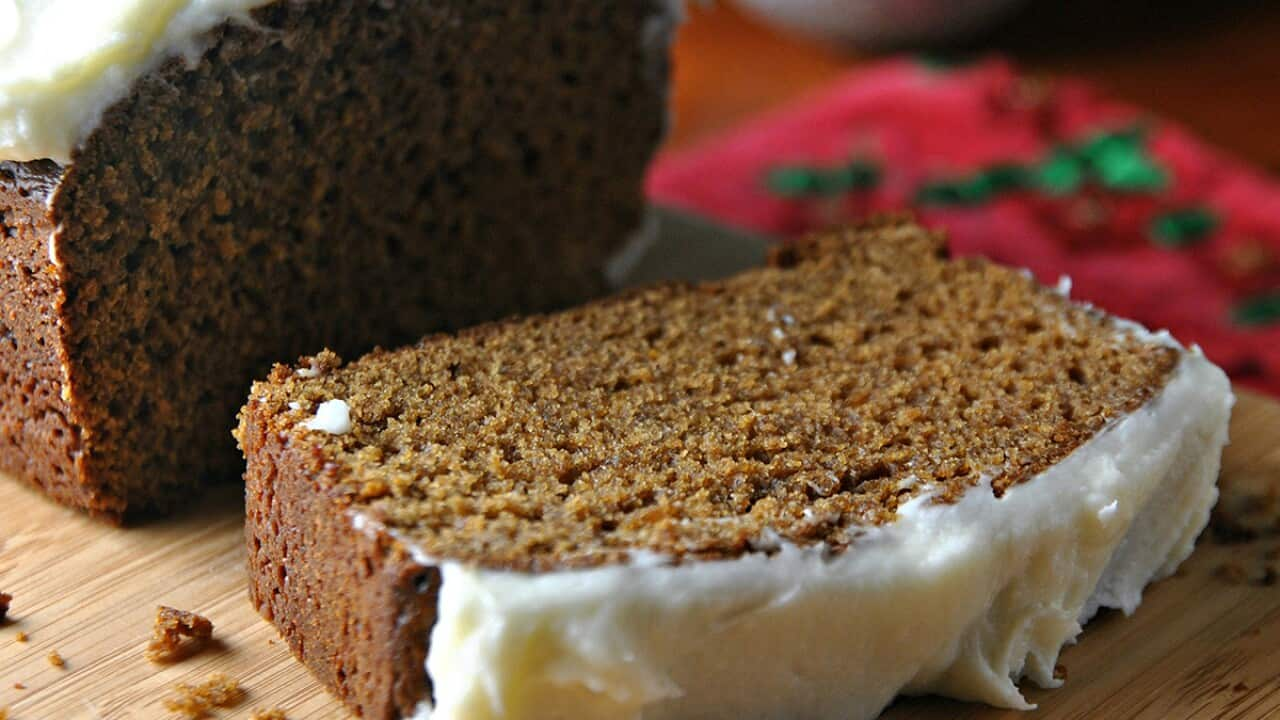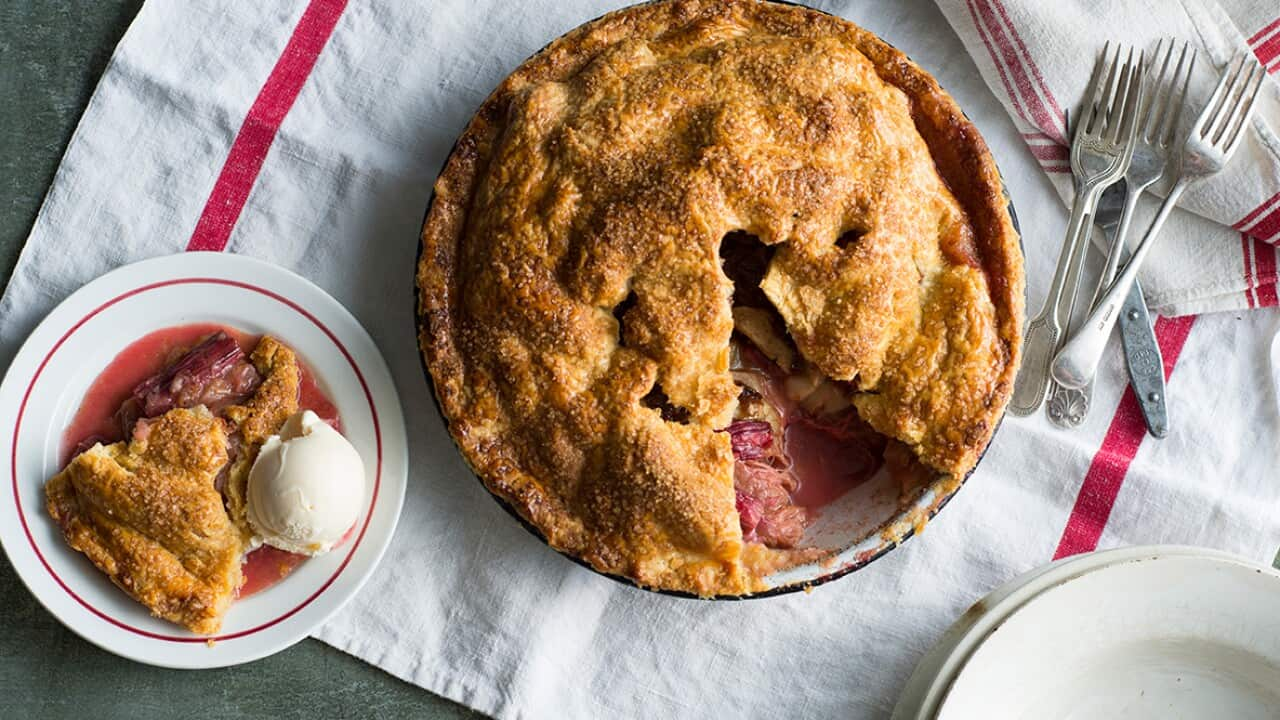How often do you eat orchids? More often than you think, actually. Because vanilla, queen of spices, is actually the product of a tropical orchid.
Beautifully aromatic, packed with flavour and versatile enough to be added to just about any dessert, vanilla has held the coveted title of the world’s most popular spice since it was first introduced to the west in the 16th century.
It's also one of the world's most expensive spices (after saffron), with a single 'A' grade vanilla bean setting you back $10 at Australia’s farm in far north Queensland, while an entire kilo will fetch around $1000.
Last year, with growing demand and after problems with production in Madagascar, where about 80 per cent of the world's natural vanilla is produced. (Most of the vanilla essence sold around the world is.) Prices for Madagascan vanilla beans topped $US400 ($A540) per kilogram last year, although prices are expected to ease this year.
So why exactly does this widely used spice cost so much, and are we getting our money’s worth?
Those orchids are picky growers
Vanilla beans are the product of the world’s only fruit-producing orchid - Vanilla planifolia - and just as their domestic flowering cousins, they require specific growing conditions and plenty of care to thrive.
A tropical climate, like that of its native Mexico, is a must, as is regular fertilisation and a host plant to support itself on. But the key to a successful crop comes down to just a matter of hours on a single day of the harvest cycle. That’s how long the plant flowers for, and it’s a critical window in which the crop must be pollinated to ensure it produces beans.
In nature, this requires a visit from a melipona bee or long beaked hummingbird, but thanks to a discovery made by 12-year-old slave Edmond Albius in the 19th century, this process can now be replicated by hand.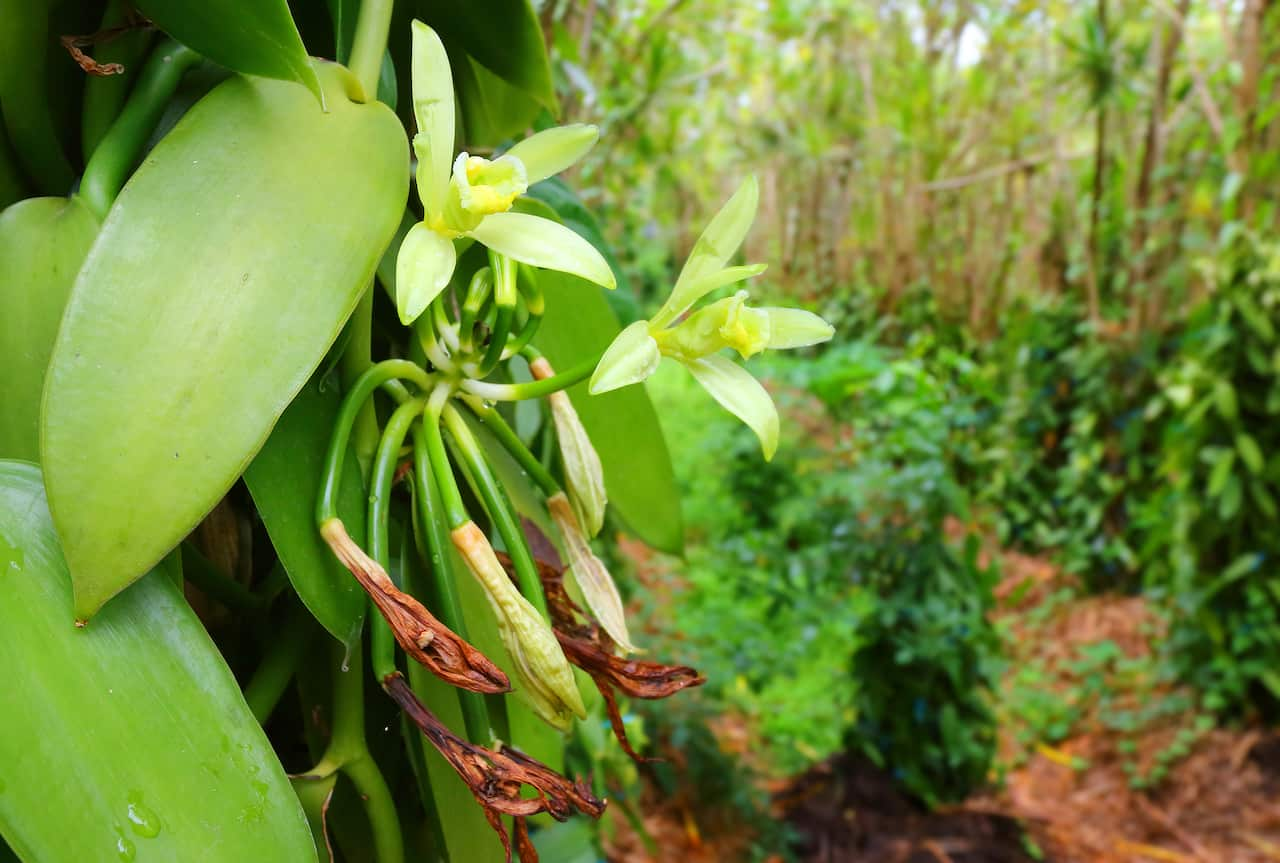 Albius’ technique involves carefully inserting a toothpick (or similar sized instrument) into the flower to allow pollen from the plant's male anther to be smeared over its female stigma which are separated by a small flap.
Albius’ technique involves carefully inserting a toothpick (or similar sized instrument) into the flower to allow pollen from the plant's male anther to be smeared over its female stigma which are separated by a small flap.

The vanilla plant only flowers for a matter of hours and must be pollinated in that narrow window to ensure it will grow beans (iStockphoto) Source: iStockphoto
While Albius unfortunately never saw the riches associated with his discovery, it was instrumental in revolutionising the cultivation of vanilla plants as it allowed them to be grown across the globe without its native pollinators - the melibona bee is only found in Mexico. In other parts of the world, pollination is done by hand.
You can see the painstaking process of hand pollination in the first episode of , this Thursday on SBS and then on SBS On Demand. The show is based at England's stunning Kew Gardens; chef Raymond Blanc, co-host Kate Humble and the experts at the gardens are building a stunning walled kitchen garden in a corner of the historic 120-hectare site. Among the many attractions at the is a tropical nursery, with about 44,000 plants - including a vanilla orchid. Kate sees how hand pollination is done, while Raymond shares a technique for keeping vanilla in the fridge (because the vanilla beans eventually lose their flavour).
Everything – and that’s everything - must be done by hand
From pollinating to harvesting and a lengthy , every stage of vanilla bean production needs to be completed by hand, making it one of the world's most labour intensive crops.
Six to nine months after pollinating the vanilla plant's flower, its green and nearly odorless beans are ready to be individually picked and begin a carefully monitored process designed to bring its natural flavours and aromas to the fore.
While still far from the dark, wrinkled and strong smelling bean we’re used to, the vanilla pods are blanched in boiling water, sweated for a couple of days and dried for weeks.
Traditionally, this curing period stretched for between five and seven months, however modern advancements and understanding of the chemical makeup of the bean have reduced this to as little as three weeks in some cases.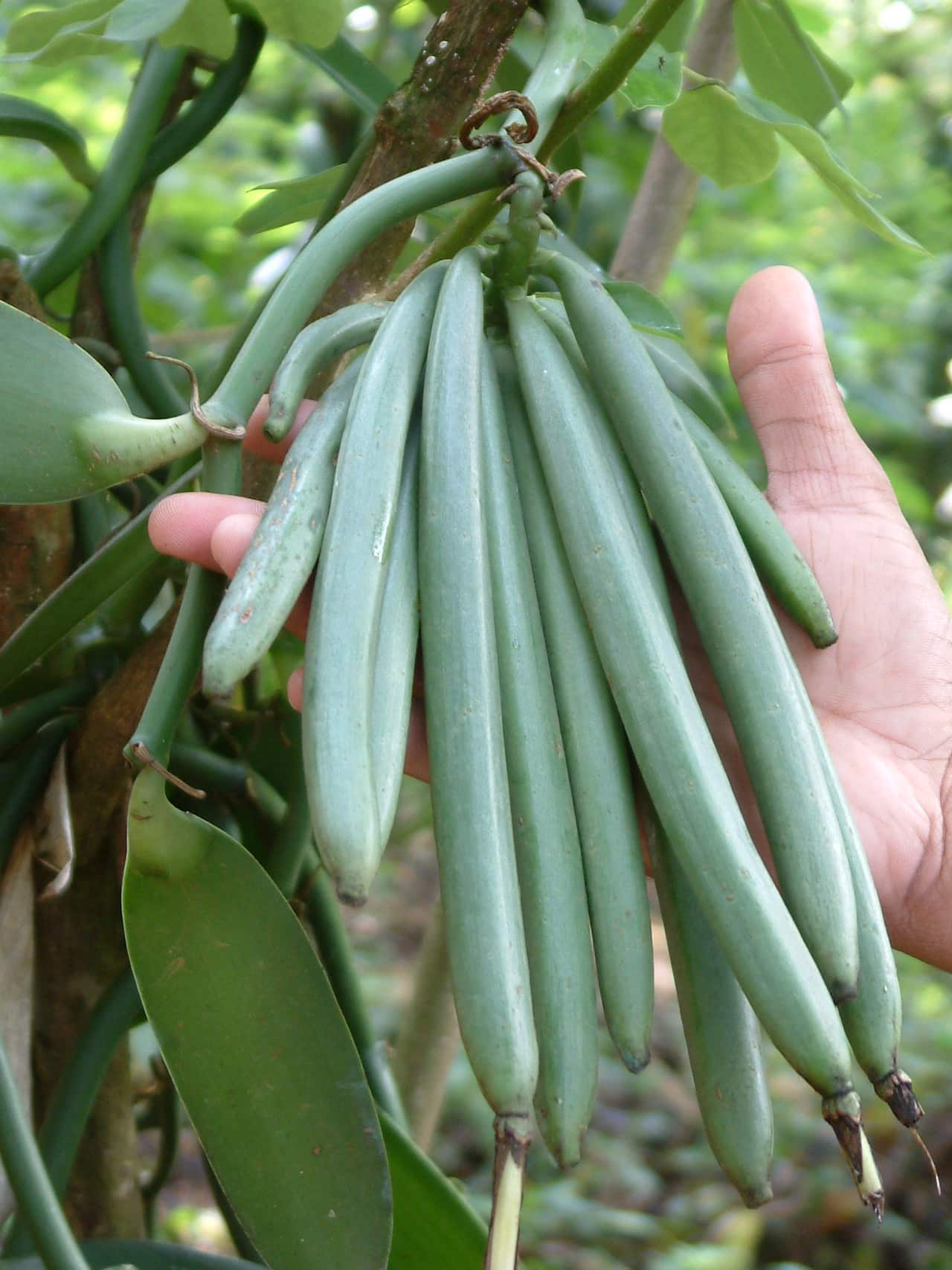 The final result is a bean loaded with vanillin, vanilla’s primary flavour compound and something life-long grower and Daintree Vanilla farm owner George Gonthier believes drives up the price.
The final result is a bean loaded with vanillin, vanilla’s primary flavour compound and something life-long grower and Daintree Vanilla farm owner George Gonthier believes drives up the price.

The beans are ready for harvest when their tips start to turn yellow (Wikimedia Commons) Source: Wikimedia Commons
"It's not an easy flavour to replicate [synthetically],” he tells SBS, making the market for the real stuff all the more competitive.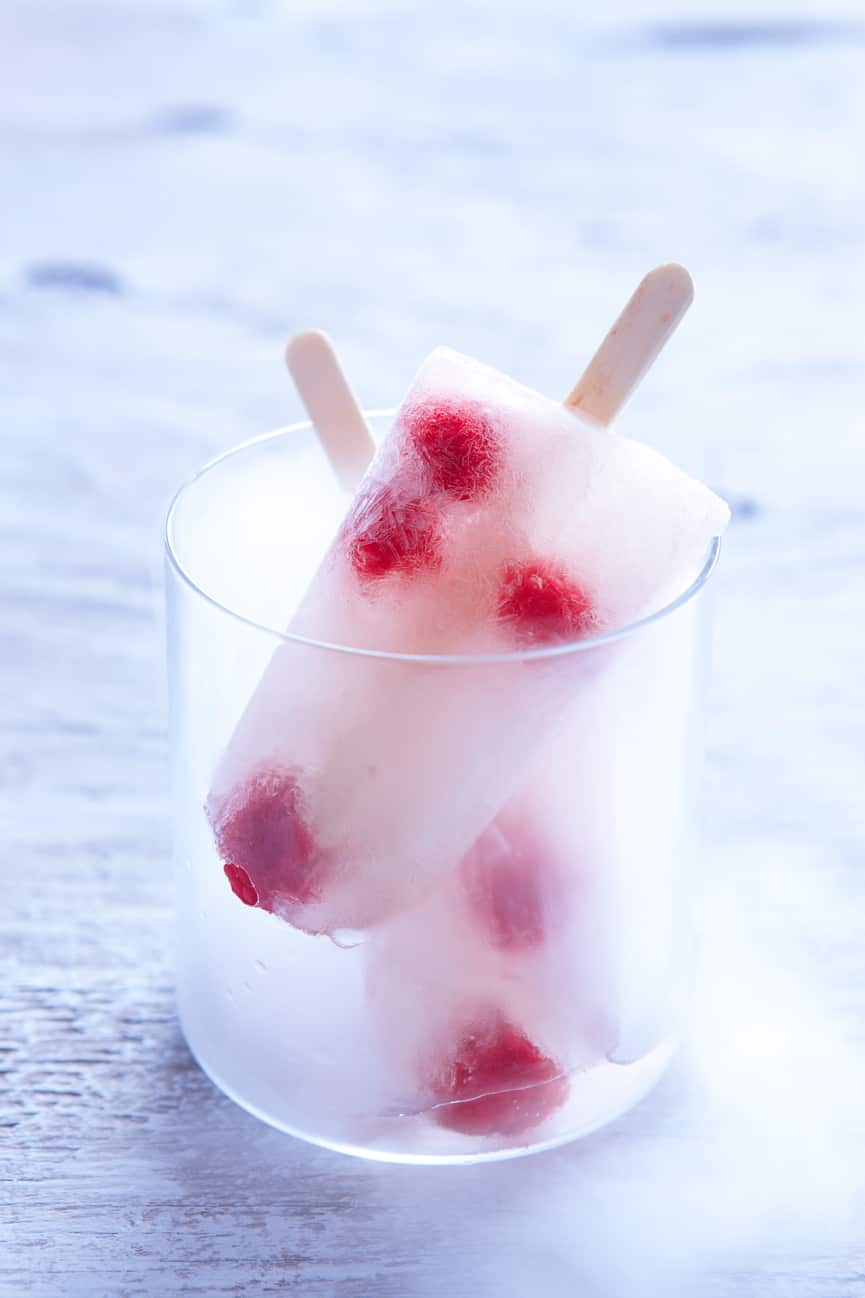 Vanilla and raspberry make great flavour mates in these .
Vanilla and raspberry make great flavour mates in these .

Prosecco ice pops with raspberry and vanilla Source: Petrina Tinslay
And the price has only been increasing
As with any product on the market, the price of vanilla beans is dependent on supply and demand, and at the moment that heavily favours vanilla bean growers.
Mr Gonthier believes the price of his beans have more than doubled in the last couple of years, and he expects the price to rise further still as the success of the crop's yield is dependent on specific weather conditions and 2016’s were unfavourable.
“Last year we had a very short cold [period] and we need the cold to trigger the plant to flower,” he says. “It was also extremely hot with almost no rainfall.”
Mr Gonthier adds that while demand for the product has been steadily increasing across the globe, Madagascar - which was formerly one of the world’s largest vanilla bean producers - “has wiped out half of their supply plantation to plant coffee beans” which have a much faster turnover and therefore profit rate.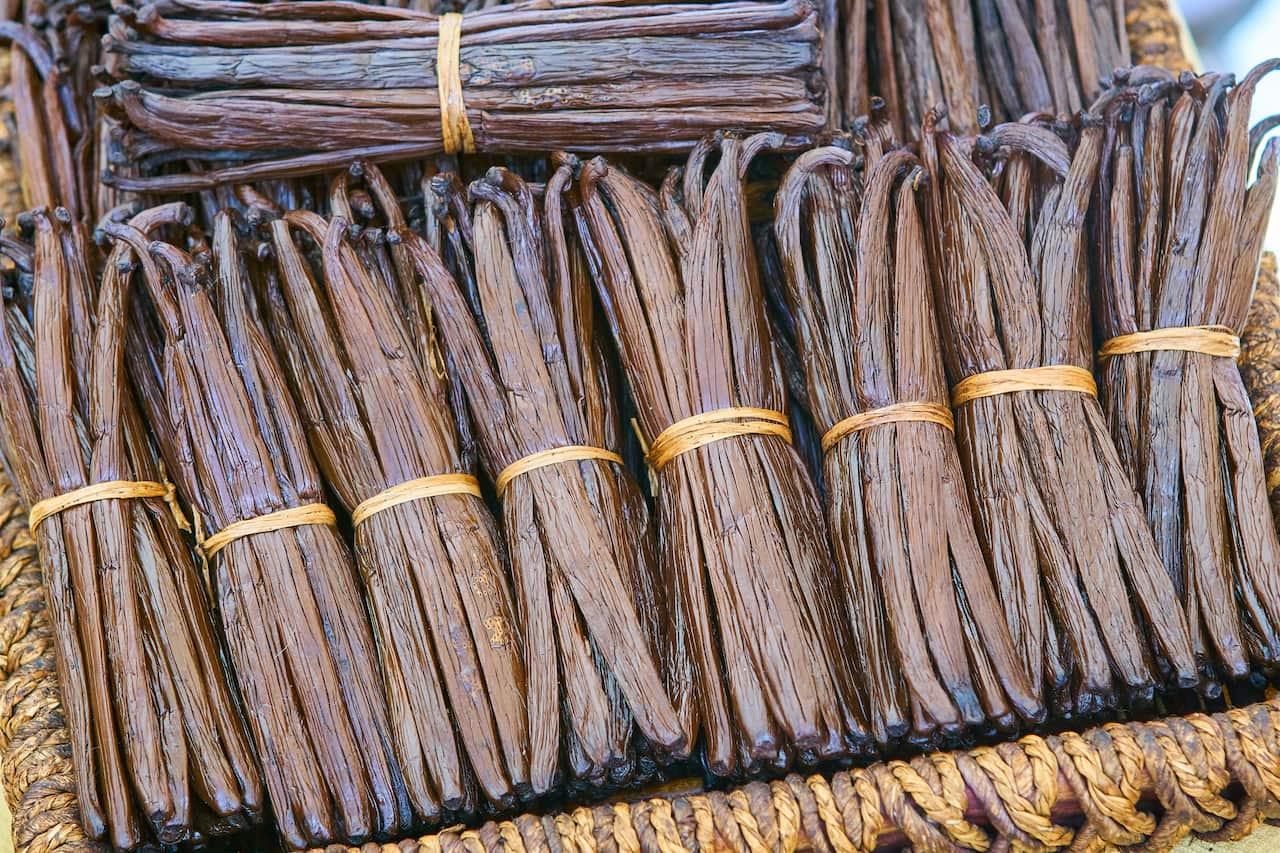 While he was getting close to $1000 per kilo for his top grade beans last year, Mr Gonthier says a chef from Dubai recently called to offer an eye-popping $1200 per kilo. However with this year’s supply uncertain, Mr Gonthier is adamant his loyalty belongs to his long-standing customers.
While he was getting close to $1000 per kilo for his top grade beans last year, Mr Gonthier says a chef from Dubai recently called to offer an eye-popping $1200 per kilo. However with this year’s supply uncertain, Mr Gonthier is adamant his loyalty belongs to his long-standing customers.

After undergoing a lengthy curing process, the vanillin content in the beans great increases giving them their signature flavour and strong aroma (iStockphoto) Source: iStockphoto
“We’ve had Australian businesses that have supported us from 1988 until now and we will never let them down,” he says, “especially not for the sake of $200 or $300 more a kilo”.
A vanilla bean farmer all his life, Mr Gonthier grew up on his family’s plantation on the Seychelles Islands in the Indian Ocean, before bringing the crop to Australia in the late 1980s.
“I’ve been doing this since I was a child, now I’m 65 and I’m still doing it,” he reflects. In fact, he and his wife Josette have so much experience that between them they can pollinate 1500 flowers in the space of just four hours. “Once you’ve got the hang of it, it comes naturally,” he says, and jokes that after a lifetime of practice he can even do the delicate procedure without his glasses on.
Mr Gonthier has also been passing on his expertise to a long-term friend from the Aboriginal shire of Yarrabah, south of Cairns.
“We supplied them [him and his wife] with knowledge, technologies and things like that,” he says, “I ask questions and every now and again I go and visit and see how things are going but I’m very impressed with what they’ve done.”
“We offered our knowledge to other growers and they said it’s too much work involved, but my answer to this is that hard work has never killed anybody!” Mr Gonthier laughs. Vanilla syrup adds another layer of indulgence to this .
Vanilla syrup adds another layer of indulgence to this .

Source: Mark Roper
But do vanilla beans have any interesting health benefits?
The use of vanilla dates back to when the Aztec people of Central America flavoured chocolate drinks with the aromatic beans and believed them to have an aphrodisiac quality.
These days, they are sought after for different reasons, with touting them as having anti-inflammatory and antibacterial properties that can be used in acne treatment, as well as antioxidants to help reverse skin damage and aging.
Vanilla has even been to be helpful in relieving nausea, anxiety and even irregular menstrual cycles, however there seems to be little research-based evidence to back any of the above claims.
What is good bang for buck however, is that good quality vanilla beans can be stored for up to four years without losing much of their potency, and once the vanilla is scraped out, pods can be stored in jars and used to flavour your sugar.


